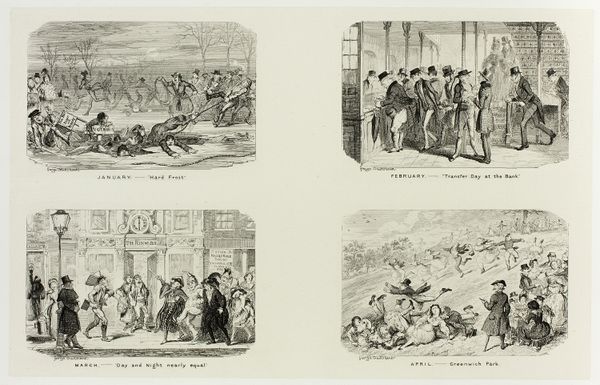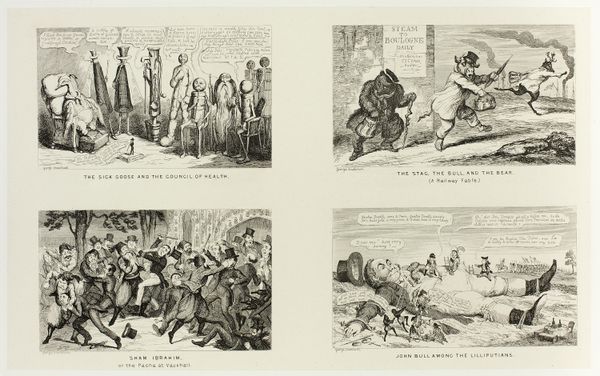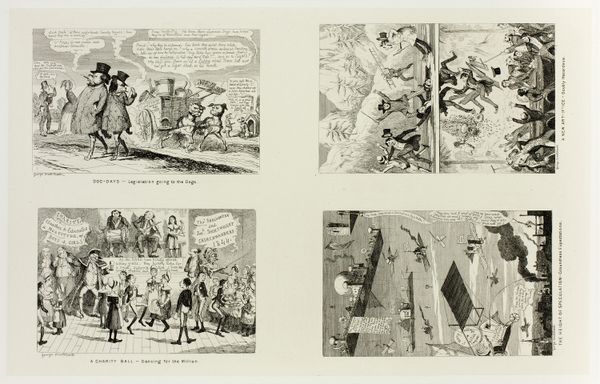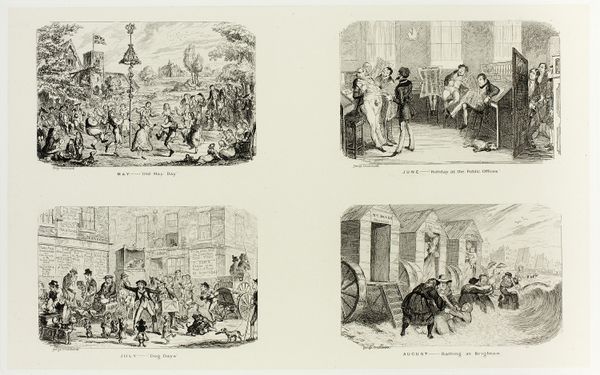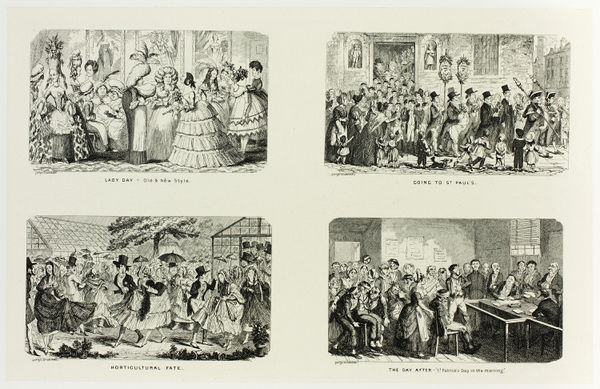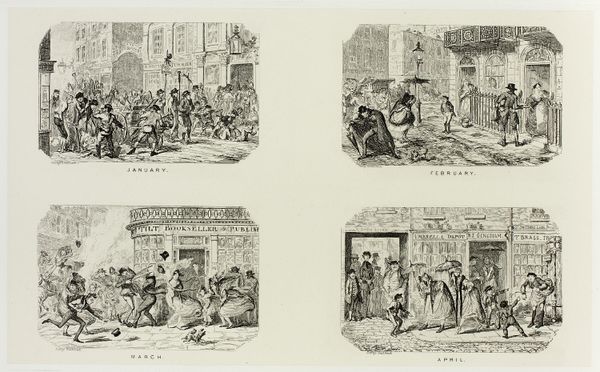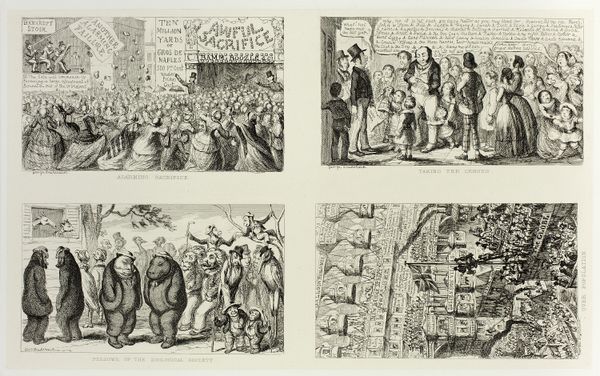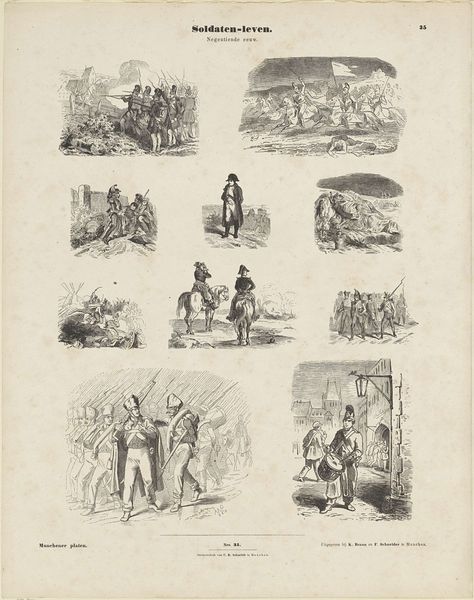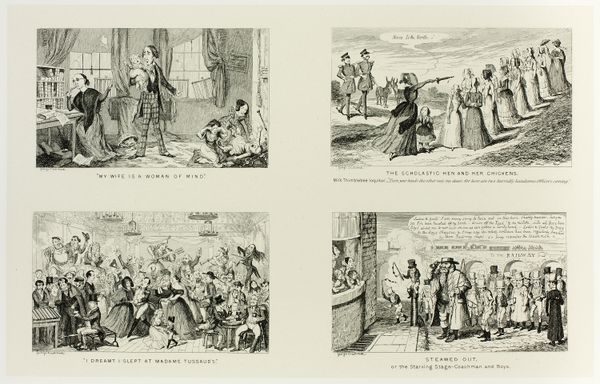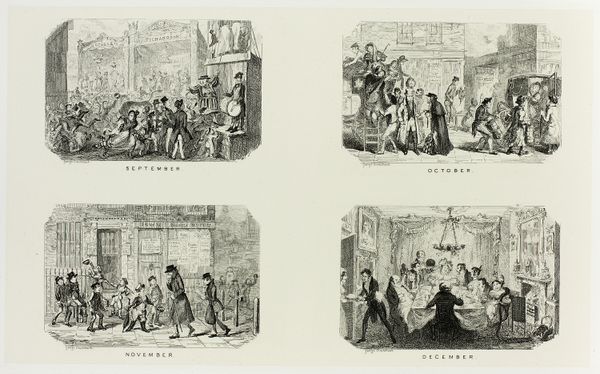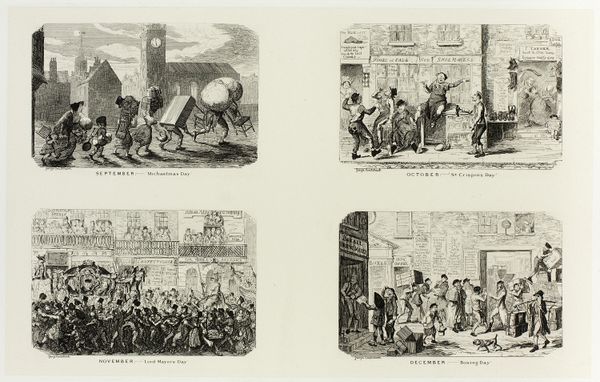
Libra - Striking the Balance from George Cruikshank's Steel Etchings to The Comic Almanacks: 1835-1853 (top left) c. 1846 - 1880
0:00
0:00
drawing, print, etching, paper, ink
#
drawing
#
narrative-art
# print
#
etching
#
caricature
#
figuration
#
paper
#
ink
#
line
#
history-painting
Dimensions: 214 × 337 mm (primary support); 345 × 507 mm (secondary support)
Copyright: Public Domain
Curator: Look at the dense, intricate line work in George Cruikshank’s etching, "Libra - Striking the Balance" which is one of a series called "Steel Etchings to The Comic Almanacks" dating from approximately 1846 to 1880, and currently held at The Art Institute of Chicago. The paper itself provides a neutral backdrop that sharpens focus to the elaborate ink imagery. Editor: It has a really claustrophobic feel. The composition is jam-packed with figures, objects, and signage all rendered with remarkable precision given how much is going on. I get the feeling that this represents urban pressure, somehow. Curator: Exactly. This visual intensity underscores Cruikshank's interest in the societal conditions of Victorian England. Look at the scene. He’s interested in how commerce and legal practices shaped the lives of the common people. The figures here, and the architecture and accoutrements surrounding them are all evidence of labor and its discontents. Editor: Note the emphasis on the scales, both the one actually being used and the symbolic presence it embodies—this speaks directly to systems of trade, yes, but also more broadly to ideas of equilibrium in a capitalist society. It also offers commentary about accountability given the state of political satire at the time. Curator: Furthermore, his use of caricature is powerful; notice how features are exaggerated for comic or critical effect—a key element reflecting on political and social power. The prints would have circulated widely within cheap publications broadening the potential scope for such messages to be impactful. Editor: There's almost a democratic impulse embedded in his choice of material and process. Through reproducible prints made on industrialized etching processes, the imagery gains currency beyond the art world of his time. The choice to render scenes with common citizens reflects the intent that such works reach more people at multiple levels of British society, and be purchased as consumer goods in their own right. Curator: By paying attention to both formal elements and understanding production, circulation and consumption surrounding Cruikshank's satirical images one gets a fuller understanding of what visual statements might have resonated during England's transition towards modernity. Editor: I find my eye drawn repeatedly toward certain areas on the paper where lines appear more heavily etched compared against their surrounds, hinting perhaps how each contained scene or figure could provide alternative narrative strands awaiting deeper inspection when revisiting George Cruikshank.
Comments
No comments
Be the first to comment and join the conversation on the ultimate creative platform.
